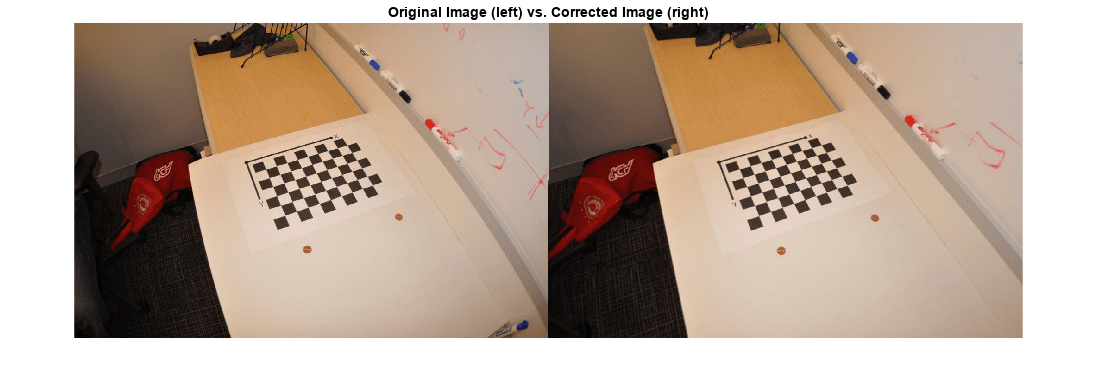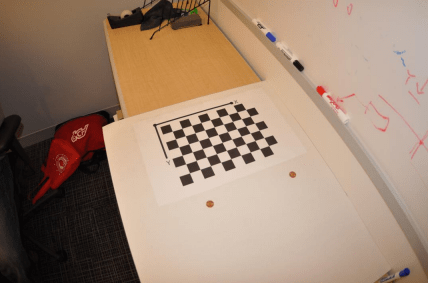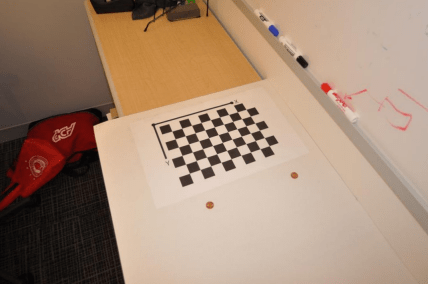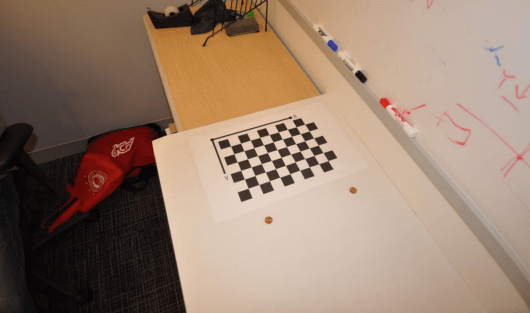undistortImage
Correct image for lens distortion
Syntax
Description
[ removes the lens
distortion in the input image J,camIntrinsics]
= undistortImage(I,intrinsics)I using the camera parameters
defined in intrinsics. The function returns the corrected image
J.
[
specifies the interpolation method for the function to use on the input
image.J,camIntrinsics]
= undistortImage(I,intrinsics,interp)
[ specifies options using
one or more name-value arguments in addition to any combination of arguments from
previous syntaxes. For example, J,camIntrinsics]
= undistortImage(___,Name=Value)(FillValues=[0 0.4470 0.7410])
sets the output pixel values that are outside the input image boundaries to a blue
color.





